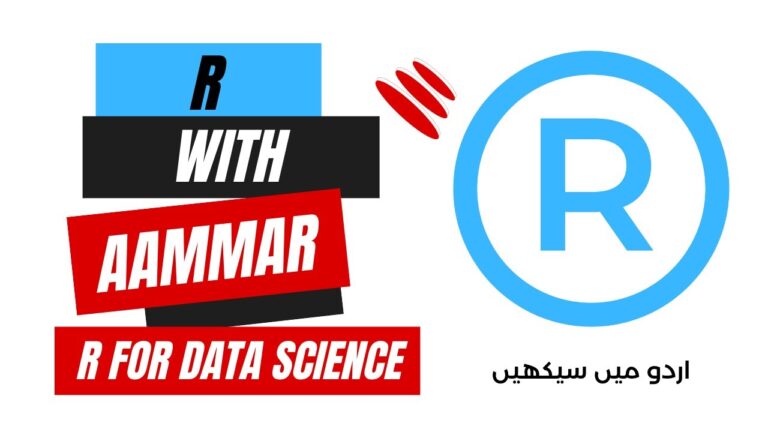Table of Contents
Introduction
In the realm of mathematics, particularly within the field of linear algebra, vectors play a pivotal role. These fundamental entities are more than mere quantities with magnitude and direction. They form the basis for complex operations and theories that have applications in various fields like physics, engineering, computer science, and more. This blog delves into the world of vectors, exploring their definitions, properties, and applications in a way that’s comprehensive and accessible.
Understanding Vectors
A vector in linear algebra is essentially a mathematical object that has both a magnitude (size) and direction. Unlike scalars, which have only magnitude, vectors represent quantities like force, velocity, or displacement in physics.
Mathematical Representation of Vectors
Vectors can be represented in several ways, depending on the context:
- Geometrically: As arrows in a space, such as a 2-dimensional plane or a 3-dimensional space.
- Algebraically: As an ordered list of numbers (coordinates), written in a column or row. For example, in a 3-dimensional space, a vector might be represented as \( \begin{pmatrix} x \\ y \\ z \end{pmatrix} \), where \( x, y, \) and \( z \) are the components of the vector in the 3D coordinate system.
- Functionally: As a function mapping points from one space to another.
Types of Vectors
Vectors are a fundamental concept in linear algebra and physics, representing quantities that have both magnitude and direction. They come in various types, each with specific characteristics and uses. Here’s a detailed explanation of the different types of vectors with examples:
Zero Vector
Description: A zero vector, denoted as 0 or 0→, has a magnitude of zero and no specific direction. It’s the only vector with this characteristic.
Example: In a 3D coordinate system, the zero vector can be represented as (0, 0, 0).
Unit Vector
Description: A unit vector has a magnitude of one. It’s often used to indicate direction without considering magnitude.
Example: In a 2D coordinate system, a unit vector pointing along the x-axis is (1, 0), and along the y-axis is (0, 1).
Position Vector
Description: A position vector represents the position of a point in space relative to an origin. It points from the origin to that point.
Example: In a 2D plane, if there’s a point P at coordinates (3, 4), its position vector (originating from the origin (0, 0)) is (3, 4).
Free Vector
Description: A free vector is defined only by its magnitude and direction, not its initial point. It can be ‘moved’ parallel to itself anywhere in space without changing.
Example: A vector representing a force of 5 Newtons acting eastward is a free vector. Its point of application can be anywhere.
Displacement Vector
Description: This vector represents the change in position of an object. It points from the initial position to the final position.
Example: If an object moves from point A (1, 2) to point B (4, 6) in a 2D plane, the displacement vector is (4 – 1, 6 – 2) = (3, 4).
Direction Vector
Description: A direction vector shows the direction of a line segment or a line. It doesn’t specify magnitude or initial point.
Example: A vector parallel to the line segment connecting points (1, 2) and (3, 4) can be (2, 2), indicating the direction of the line.
Column Vector and Row Vector
Description: In matrix notation, a column vector is a matrix with a single column, whereas a row vector is a matrix with a single row.
Examples:
Column vector: \( \begin{pmatrix} 3 \\ 4 \\ 5 \end{pmatrix} \)
Row vector: \( \begin{matrix} 3 & 4 & 5 \end{matrix} \)
Co-initial Vectors
Description: Vectors that have the same initial point or origin are known as co-initial vectors.
Example: In a 2D plane, vectors (2, 3) and (1, 0) starting from the origin (0, 0) are co-initial.
Parallel and Antiparallel Vectors
Parallel Description: Vectors that have the same or exactly opposite directions. Parallel vectors have the same or scalar multiple directions.
Antiparallel Description: Antiparallel vectors are parallel but point in opposite directions.
Examples:
Parallel: (2, 2) and (4, 4) are parallel.
Antiparallel: (3, 3) and (-3, -3) are antiparallel.
Orthogonal Vectors
Description: Vectors are orthogonal (perpendicular) to each other if their dot product is zero.
Example: In 2D, vectors (a, b) and (-b, a) are orthogonal.
Each type of vector plays a specific role in mathematical computations and physical interpretations, making them essential in fields ranging from physics and engineering to computer graphics and machine learning.
Importance of Vectors in Linear Algebra
Vectors play a crucial role in linear algebra and are fundamental to understanding and applying its concepts. Here’s an in-depth look at the importance of vectors in linear algebra, accompanied by examples:
1. Representation of Data and Physical Quantities
Role: Vectors are used to represent data points in space, particularly in multi-dimensional spaces, which are common in various scientific and engineering applications.
Example: In physics, a force vector can represent the magnitude and direction of a force applied to an object. In a 3D coordinate system, a force of 10 Newtons acting in a direction characterized by angles with the coordinate axes can be represented as a vector.
2. Basis of Linear Algebraic Operations
Role: Fundamental operations in linear algebra, such as addition, subtraction, and scalar multiplication, are performed on vectors. These operations are essential for solving linear equations and understanding linear transformations.
Example: Vector addition is used in physics to determine the resultant force when multiple forces act on a body. If two forces represented by vectors \( \vec{A} = (3, 4) \) and \( \vec{B} = (1, 2) \) are applied to an object, the resultant force is \( \vec{A} + \vec{B} = (4, 6) \).
3. Building Blocks for Complex Structures
Role: Vectors form matrices and tensors, which are higher-order structures used extensively in linear algebra, representing systems of linear equations and transformations.
Example: In computer graphics, transformations such as rotation and scaling are represented by matrices. These matrices are constructed using vectors that define the axes of transformation.
4. Linear Transformations and Changes of Basis
Role: Understanding vectors is key to grasping linear transformations, which include rotations, scaling, and translations in space.
Example: In machine learning, feature scaling involves linearly transforming feature vectors to have a specific range or variance, often using matrices that are applied to the original feature vectors.
5. Solving Systems of Linear Equations
Role: Vectors enable the representation and solution of systems of linear equations, which is a fundamental aspect of linear algebra.
Example: Consider a system of linear equations in 2D: \( x + 2y = 5 \) and \( 3x y = 2 \). This system can be represented using vector and matrix notation and solved using methods such as matrix inversion or Gaussian elimination.
6. Defining Vector Spaces and Subspaces
Role: Vector spaces, which are collections of vectors that can be scaled and added together, are a central concept in linear algebra. Subspaces, which are subsets of vector spaces, also play a significant role.
Example: The set of all possible linear combinations of two vectors \( \vec{v_1} \) and \( \vec{v_2} \) in a plane forms a vector space or a subspace if they are part of a larger space.
7. Eigenvectors and Eigenvalues
Role: Eigenvectors and eigenvalues are used in studying linear transformations and are essential in areas such as stability analysis, quantum mechanics, and principal component analysis (PCA) in data science.
Example: In PCA, eigenvectors are used to determine the directions of maximum variance in high-dimensional data, and the corresponding eigenvalues indicate the magnitude of variance in those directions.
8. Geometric Interpretation and Visualization
Role: Vectors provide a way to visualize and interpret many algebraic concepts, facilitating an intuitive understanding of linear algebra.
Example: The cross product of two vectors in 3D space results in a vector perpendicular to both, which is fundamental in computing torques and in 3D graphics for calculating normals to surfaces.
9. Optimization Problems
Role: Vectors are used in formulating and solving optimization problems, including finding minima or maxima of functions.
Example: In gradient descent, a popular optimization algorithm in machine learning, the gradient is a vector pointing in the direction of the steepest ascent of a function.
10. Applications in Advanced Mathematics and Physics
Role: Vectors are foundational in advanced mathematical fields like quantum mechanics and differential geometry, as well as in sophisticated physical models.
Example: In quantum mechanics, state vectors (or wavefunctions) in Hilbert space represent the states of a quantum system.
In summary, vectors are not just mathematical abstractions; they are practical tools that allow us to model and solve real-world problems across various domains. Their multifaceted applications and fundamental role in linear algebra make them indispensable in both theoretical and applied mathematics.
Vectors Types in 2D space
Vectors in a 2D space can be visualized as arrows on a flat plane, typically represented with an x-axis and a y-axis. Each vector in this space has two components, corresponding to its projection on these axes. Here are some examples to illustrate vectors in a 2D space:
1. Basic Vector
– Vector: \( \vec{v} = (3, 2) \)
– Description: This vector can be visualized as an arrow starting at the origin (0, 0) and ending at the point (3, 2). It extends 3 units along the x-axis and 2 units along the y-axis.
2. Zero Vector
– Vector: \( \vec{0} = (0, 0) \)
– Description: The zero vector has no magnitude and no direction. It’s represented as a point at the origin.
3. Unit Vectors
– Vector: \( \hat{i} = (1, 0) \) and \( \hat{j} = (0, 1) \)
– Description: These are standard unit vectors along the x-axis (\( \hat{i} \)) and y-axis (\( \hat{j} \)). They have a magnitude of 1 and point in the direction of the respective axes.
4. Negative Vector
– Vector: If \( \vec{v} = (3, 2) \), then its negative is \( -\vec{v} = (-3, -2) \)
– Description: The negative of a vector has the same magnitude but points in the opposite direction.
5. Scaled Vector
– Vector: Scaling \( \vec{v} = (3, 2) \) by a factor of 2 gives \( 2\vec{v} = (6, 4) \)
– Description: This vector is twice as long as \( \vec{v} \), extending 6 units along the x-axis and 4 units along the y-axis.
6. Vector Addition
– Vectors: \( \vec{a} = (1, 2) \) and \( \vec{b} = (3, 1) \)
– Resultant Vector: \( \vec{a} + \vec{b} = (1+3, 2+1) = (4, 3) \)
– Description: The resultant vector is obtained by adding the corresponding components of \( \vec{a} \) and \( \vec{b} \).
7. Vector Subtraction
– Vectors: \( \vec{a} = (4, 3) \) and \( \vec{b} = (1, 2) \)
– Resultant Vector: \( \vec{a} – \vec{b} = (4-1, 3-2) = (3, 1) \)
– Description: The resultant vector is found by subtracting the components of \( \vec{b} \) from \( \vec{a} \).
8. Orthogonal Vectors
– Vectors: \( \vec{u} = (2, 3) \) and \( \vec{v} = (-3, 2) \)
– Description: These vectors are orthogonal (perpendicular) to each other since their dot product is zero: \( \vec{u} \cdot \vec{v} = 2 \times (-3) + 3 \times 2 = 0 \).
9. Position Vector
– Vector: \( \vec{p} = (5, -1) \)
– Description: This vector represents the position of the point (5, -1) relative to the origin in the 2D plane.
10. Free Vector
– Vector: Any vector, e.g., \( \vec{f} = (2, 3) \)
– Description: As a free vector, \( \vec{f} \) can be ‘moved’ parallel to itself anywhere in the plane without changing its nature.
These examples demonstrate how vectors in 2D space can represent various quantities and concepts, from simple position and direction to more complex operations like addition, subtraction, and scaling.
Basic Properties and Operations
Vectors support a variety of operations that are fundamental in linear algebra and physics. Here’s a detailed explanation of each vector operation along with examples, particularly focusing on vectors in a 2D space.
1. Vector Addition
Explanation: Vector addition involves adding corresponding components of vectors. If \( \vec{A} = (a_1, a_2) \) and \( \vec{B} = (b_1, b_2) \), then \( \vec{A} + \vec{B} = (a_1 + b_1, a_2 + b_2) \).
Example: \( \vec{A} = (3, 4) \), \( \vec{B} = (1, 2) \). The sum is \( \vec{A} + \vec{B} = (3+1, 4+2) = (4, 6) \).
2. Vector Subtraction
Explanation: Similar to addition, vector subtraction involves subtracting the components of one vector from the corresponding components of another. \( \vec{A} – \vec{B} = (a_1 – b_1, a_2 – b_2) \).
Example: \( \vec{A} = (3, 4) \), \( \vec{B} = (1, 2) \). The difference is \( \vec{A} – \vec{B} = (3-1, 4-2) = (2, 2) \).
3. Scalar Multiplication
Explanation: Scalar multiplication involves multiplying each component of a vector by a scalar (a real number). If \( \vec{A} = (a_1, a_2) \) and \( k \) is a scalar, then \( k\vec{A} = (ka_1, ka_2) \).
Example: \( \vec{A} = (3, 4) \), \( k = 2 \). The scaled vector is \( 2\vec{A} = (2 \times 3, 2 \times 4) = (6, 8) \).
4. Dot Product (Scalar Product)
Explanation: The dot product of two vectors results in a scalar. It’s calculated by multiplying corresponding components of vectors and then summing these products. If \( \vec{A} = (a_1, a_2) \) and \( \vec{B} = (b_1, b_2) \), then \( \vec{A} \cdot \vec{B} = a_1b_1 + a_2b_2 \).
Example: \( \vec{A} = (3, 4) \), \( \vec{B} = (1, 2) \). The dot product is \( \vec{A} \cdot \vec{B} = 3 \times 1 + 4 \times 2 = 3 + 8 = 11 \).
5. Cross Product (Vector Product)
Explanation: The cross product is specific to 3D vectors and results in a vector that is perpendicular to both original vectors. It’s not directly defined in 2D, but in 3D, if \( \vec{A} = (a_1, a_2, a_3) \) and \( \vec{B} = (b_1, b_2, b_3) \), then \( \vec{A} \times \vec{B} = (a_2b_3 – a_3b_2, a_3b_1 – a_1b_3, a_1b_2 – a_2b_1) \).
Example: \( \vec{A} = (1, 0, 0) \), \( \vec{B} = (0, 1, 0) \). The cross product is \( \vec{A} \times \vec{B} = (0 \times 0 – 0 \times 1, 0 \times 0 – 0 \times 1, 1 \times 1 – 0 \times 0) = (0, 0, 1) \).
6. Vector Norm (Magnitude)
Explanation: The norm or magnitude of a vector is a measure of its length. For a vector \( \vec{A} = (a_1, a_2) \), its magnitude is \( ||\vec{A}|| = \sqrt{a_1^2 + a_2^2} \).
Example: \( \vec{A} = (3, 4) \
). The magnitude is \( ||\vec{A}|| = \sqrt{3^2 + 4^2} = \sqrt{9 + 16} = \sqrt{25} = 5 \).
7. Unit Vector
Explanation: A unit vector is a vector of magnitude 1 in the direction of the original vector. It’s obtained by dividing the vector by its magnitude. For \( \vec{A} \), the unit vector \( \hat{A} \) is \( \hat{A} = \frac{\vec{A}}{||\vec{A}||} \).
Example: \( \vec{A} = (3, 4) \). The unit vector is \( \hat{A} = \frac{(3, 4)}{5} = \left(\frac{3}{5}, \frac{4}{5}\right) \).
8. Projection
Explanation: The projection of vector \( \vec{A} \) onto \( \vec{B} \) is a vector that lies on \( \vec{B} \) and is obtained by projecting \( \vec{A} \) onto \( \vec{B} \) along the line perpendicular to \( \vec{B} \). Mathematically, it’s given by \( \text{proj}_{\vec{B}} \vec{A} = \left( \frac{\vec{A} \cdot \vec{B}}{||\vec{B}||^2} \right) \vec{B} \).
Example: \( \vec{A} = (3, 4) \), \( \vec{B} = (1, 2) \). The projection is \( \text{proj}_{\vec{B}} \vec{A} = \left( \frac{11}{5} \right) (1, 2) = \left(\frac{11}{5}, \frac{22}{5}\right) \).
These operations form the core of vector manipulation in linear algebra, allowing for a wide range of applications in mathematics, physics, engineering, and other fields.
Applications of Vectors
Vectors are indispensable in various scientific fields. Here are a few key applications:
1. Physics: Vectors are used to describe forces, velocities, and accelerations in physics. They help in breaking down forces into components and analyzing motion in multiple dimensions.
2. Engineering: In engineering, vectors are crucial for structural analysis, dynamics, and fluid mechanics. They provide a way to understand stresses, strains, and fluid flow.
3. Computer Graphics: In the world of computer graphics, vectors are used to model animations and renderings. They help in creating realistic movements and textures in 3D spaces.
4. Data Science and Machine Learning: Vectors form the backbone of algorithms in machine learning and data science. They are used to represent data points in high-dimensional spaces, enabling efficient processing and analysis.
Visualizing Vectors
Understanding vectors often requires visual representation. Here’s where vector diagrams come in, helping to illustrate concepts like vector addition, scalar multiplication, and the effects of operations like the dot and cross product.
Vector in 2D space
Creating and drawing vectors in Python can be efficiently done using libraries such as NumPy for vector creation and Matplotlib for visualization. Here’s a step-by-step guide to creating and drawing a 2D vector:
Create a Vector: You can use NumPy to create arrays that represent vectors. For instance, a 2D vector \( \vec{v} = [x, y] \) can be represented as a NumPy array.
Plot the Vector: To visualize the vector, you can use Matplotlib. You’ll plot the vector from the origin (0,0) to its end point (x, y).
Let’s create a 2D vector, say \( \vec{v} = [2, 3] \), and draw it.
Here is the python code:
#import libraries
import matplotlib.pyplot as plt
import numpy as np
# Creating a vector v = [2, 3]
v = np.array([2, 3])
# Plotting the vector
plt.figure()
plt.quiver(0, 0, v[0], v[1], angles='xy', scale_units='xy', scale=1, color='r')
plt.xlim(-1, 5)
plt.ylim(-1, 5)
plt.grid()
plt.title('2D Vector')
plt.xlabel('X axis')
plt.ylabel('Y axis')
plt.gca().set_aspect('equal', adjustable='box')
plt.show()
The plot above illustrates the 2D vector \( \vec{v} = [2, 3] \). It starts from the origin (0, 0) and extends to the point (2, 3) in the Cartesian coordinate system. The red arrow represents the vector itself.
In the plot:
- The x-axis ranges from -1 to 5.
- The y-axis ranges from -1 to 5.
- The grid helps to locate the endpoint of the vector easily.
This method can be expanded to plot multiple vectors, change their starting points, or even plot in 3D by adjusting the plotting functions accordingly.
Vector in 3D space
Drawing a vector in 3D space in Python can be done using Matplotlib’s mpl_toolkits.mplot3d module. This module allows for the creation of 3D plots and is quite versatile for visualizing data in three dimensions.
To illustrate how to draw a 3D vector, let’s consider a simple example where we draw a vector \( \vec{v} = [1, 2, 3] \) in a 3D coordinate system. Here’s the Python code to achieve this:
from mpl_toolkits.mplot3d import Axes3D
# Create a 3D vector
v = np.array([1, 2, 3])
# Set up the plot
fig = plt.figure()
ax = fig.add_subplot(111, projection='3d')
# Plot the vector
ax.quiver(0, 0, 0, v[0], v[1], v[2], color='b')
# Setting the limits for the axes
ax.set_xlim([0, 4])
ax.set_ylim([0, 4])
ax.set_zlim([0, 4])
# Adding labels
ax.set_xlabel('X axis')
ax.set_ylabel('Y axis')
ax.set_zlabel('Z axis')
# Title
ax.set_title('3D Vector')
plt.show()
The plot above illustrates the 3D vector \( \vec{v} = [1, 2, 3] \) in a three-dimensional coordinate system:
- The vector originates from the point (0, 0, 0) and extends to the point (1, 2, 3).
- The blue arrow represents the vector itself.
- The coordinate system has been labeled along the X, Y, and Z axes for clarity.
This visualization demonstrates how to represent vectors in 3D space using Python and Matplotlib. You can adjust the vector coordinates and the limits of the axes to visualize different vectors or to change the perspective of the 3D plot.
Updated vector in 3D space with Unit Vectors
You can also draw unit vectors alongside your vectors similar to the one below.
Here is the python code:
# Redrawing the plot with unit (basis) vectors in 3D space
# Unit vectors along the x, y, and z axes
unit_vectors = np.array([[1, 0, 0], [0, 1, 0], [0, 0, 1]])
# Set up the plot
fig = plt.figure()
ax = fig.add_subplot(111, projection='3d')
# Plot the original vector
ax.quiver(0, 0, 0, v[0], v[1], v[2], color='b', label='Vector v [1, 2, 3]')
# Plot the unit vectors
for vec in unit_vectors:
ax.quiver(0, 0, 0, vec[0], vec[1], vec[2], color='r', arrow_length_ratio=0.1)
# Setting the limits for the axes
ax.set_xlim([0, 4])
ax.set_ylim([0, 4])
ax.set_zlim([0, 4])
# Adding labels and legend
ax.set_xlabel('X axis')
ax.set_ylabel('Y axis')
ax.set_zlabel('Z axis')
ax.legend()
# Title
ax.set_title('3D Vector with Unit Vectors')
plt.show()
The updated plot now includes the original vector \( \vec{v} = [1, 2, 3] \) along with the unit (basis) vectors in 3D space:
- The blue arrow represents the original vector \( \vec{v} \).
- The red arrows represent the unit vectors along the X, Y, and Z axes. These unit vectors are the basis vectors in a standard Cartesian coordinate system, each having a length of 1 along their respective axes.
This visualization helps to understand how a vector relates to the standard basis vectors in 3D space. The unit vectors are essential for defining the orientation and scale of the coordinate system, providing a reference for measuring other vectors in the space.
Conclusion
Vectors in linear algebra are more than mere mathematical abstractions. They are tools that allow us to describe and understand a multitude of phenomena in the physical and digital world. From the fundamental operations to their vast applications, vectors are integral to the fabric of linear algebra and beyond.
This comprehensive guide serves as a stepping stone into the rich and intricate world of vectors. Whether you’re a student, a professional, or just a curious mind, the understanding of vectors opens up a universe of possibilities in both theoretical and applied sciences.
To master in details learn from Khan Academy.

Kaggle Master at 40 in 1 month
Facebook Twitter LinkedIn Forty years young and hungry to take on a new challenge – that’s the mindset

Powerful Websites
Advancements in website tools 💻 in the digital age provide invaluable resources. From e-commerce giants and social media

AI tools designed for students and academics
Use of AI tools in research is the most important thing these days. In this article we will give you 12 such tools with their description and ease of use.

Successful scholarship Hunting
Scholarship, talib ilm ke liye mukhtalif maqasid mein madadgar hoti hai. Iske hasil karne ke liye hunting zaroori

Google Scholar Kaise Use Karein?
Google Scholar ek powerful search engine hai jo scientific literature ke liye use kiya jata hai. Is article mein hum aapko bataein ge ke Google Scholar ko kaise use karein aur kab kab aapko dusre tools ya databases ko use karna chahiye.
Chapter 8: The Future of Sampling in Statistics – Emerging Trends and Innovations
The future of sampling in statistics is vibrant and full of potential, marked by technological innovation and methodological advancements. As we embrace these changes, sampling will continue to be a pivotal tool in unraveling the complexities of the world through data. The journey ahead is not just about statistical techniques; it’s about shaping a future where data is collected, analyzed, and used responsibly and innovatively.






This blog post is very informative, when I run the codes provided in this blog it will give me a new concept of vector representation in 2D and 3D space.
Sir, you are the most unique among all the teachers on YouTube, because those people don’t even take money to teach what you teach free of charge. Things are being understood and remembered because first lectures, then practice, and then notes are made as a blog. Sir, you are a great person.
ALLAH KAREEM aap ko dono jahan ki bhalian aata kry AAMEEN.